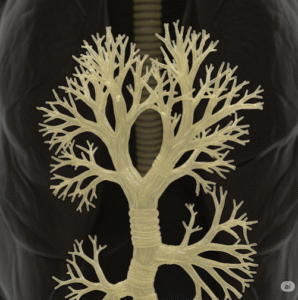Overview
Wilson Disease is a rare genetic disorder that causes excessive accumulation of copper in the body, particularly in the liver, brain, and eyes. Normally, copper is eliminated through bile, but in Wilson Disease, a genetic mutation impairs this process, leading to toxic levels that cause liver damage and neurological symptoms. Early diagnosis and lifelong treatment can prevent serious complications and allow for a normal life expectancy.
What is Wilson Disease?
Wilson Disease, also known as hepatolenticular degeneration, is an autosomal recessive inherited condition caused by mutations in the ATP7B gene, which regulates copper transport and excretion in the liver. When the gene doesn’t function properly, copper builds up in tissues, leading to progressive liver disease, psychiatric disturbances, and neurological problems. The disease often appears between ages 5 and 35, though symptoms can occur earlier or later.
Symptoms
Symptoms vary widely and may be hepatic, neurological, or psychiatric depending on where copper accumulates:
Liver-related symptoms (often in children and teens):
- Fatigue
- Jaundice (yellowing of skin and eyes)
- Enlarged liver or spleen
- Abdominal swelling (ascites)
- Easy bruising or bleeding
- Elevated liver enzymes
- Acute liver failure (in severe cases)
Neurological and psychiatric symptoms (often in adults):
- Tremors or shaking
- Difficulty speaking or swallowing
- Muscle stiffness or poor coordination
- Depression, anxiety, or personality changes
- Memory loss or confusion
- Psychosis (rare)
Ocular sign:
- Kayser-Fleischer rings – brownish rings around the cornea visible with a slit-lamp exam
Causes
Wilson Disease is caused by mutations in the ATP7B gene, which is responsible for producing a protein that helps transport copper into bile for excretion. When this protein doesn’t work properly, copper accumulates in the liver and then spreads to other organs.
- Autosomal recessive inheritance – a child must inherit two mutated copies (one from each parent) to be affected.
Risk Factors
Risk factors are largely genetic:
- Family history of Wilson Disease
- Consanguineous (related) parents increase the likelihood of inheriting two faulty genes
- Ethnic background – it can affect all populations but is more frequently diagnosed in people of European, Middle Eastern, or South Asian descent
Complications
If untreated, Wilson Disease can lead to severe and sometimes life-threatening complications:
- Cirrhosis (scarring of the liver)
- Liver failure requiring transplantation
- Hepatocellular carcinoma (liver cancer)
- Severe neurological disability (tremors, dystonia, Parkinsonism)
- Psychiatric hospitalization due to behavioral disturbances
- Kidney damage, osteoporosis, and anemia due to systemic copper buildup
Prevention
While Wilson Disease itself cannot be prevented due to its genetic nature, early detection and treatment can prevent irreversible organ damage:
- Genetic screening for family members of affected individuals
- Regular liver function and copper level tests in at-risk populations
- Prenatal genetic counseling for known carriers
- Routine monitoring in diagnosed patients to ensure copper levels stay within a safe range
Treatment Options in Korea
South Korea offers advanced, comprehensive care for Wilson Disease through its world-class hepatology and neurology departments. Key treatment approaches include:
- Chelation therapy to remove excess copper from the body:
- D-penicillamine
- Trientine
- Zinc therapy – blocks absorption of dietary copper
- Low-copper diet, avoiding liver, shellfish, chocolate, nuts, and mushrooms
- Liver transplantation in cases of liver failure or end-stage cirrhosis
- Regular monitoring of copper levels, liver function, and neurological symptoms
- Multidisciplinary follow-up care including hepatologists, neurologists, and nutritionists
- Available at leading institutions like Asan Medical Center, Seoul National University Hospital, and Samsung Medical Center, which provide state-of-the-art diagnosis and lifelong management for metabolic liver diseases













